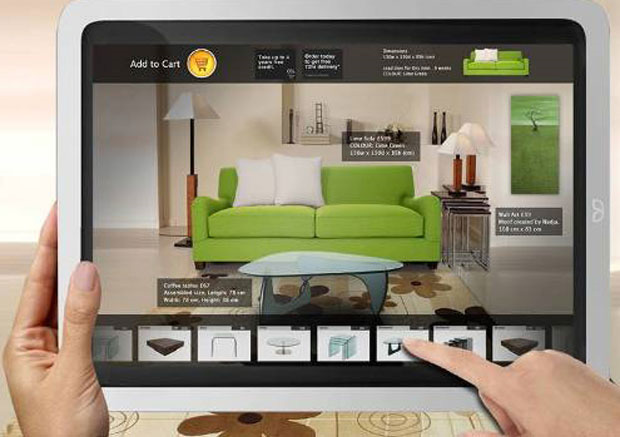Interior design, once solely a realm of creativity and aesthetics, has witnessed a remarkable transformation in recent years thanks to the integration of technology. The infusion of tech into interior design has elevated the field to new heights and significantly improved how we conceptualise, plan, and experience interior spaces.
- Digital Visualization: Traditional mood boards and physical swatches have given way to digital tools that allow designers and clients to visualise spaces in 3D. Interior design software enables real-time alterations, making it easier to experiment with different layouts, colour schemes, and furniture placements before making any physical changes.
- Augmented Reality (AR): AR apps have revolutionised how clients envision the result. With AR, clients can superimpose digital furniture and decor into their spaces using their smartphones or tablets, providing a tangible sense of how design choices will look and feel in their homes.
- Virtual Reality (VR): VR takes it further by immersing users in a fully interactive digital environment. Interior designers can now offer virtual walkthroughs of proposed designs, allowing clients to experience the space before it’s even built. This technology has become invaluable in architectural and interior design presentations.
- Smart Home Integration: The rise of smart home technology has profoundly impacted interior design. Designers now consider the seamless integration of devices like smart lighting, thermostats, and security systems into the overall design. This includes concealing tech elements within the decor to maintain aesthetic cohesion.
- 3D Printing: The advent of 3D printing has opened up endless possibilities in custom furniture and decor. Interior designers can create one-of-a-kind pieces tailored to the client’s preferences and the unique requirements of a space, pushing the boundaries of design.
- Energy Efficiency: Technology has also played a pivotal role in promoting sustainable interior design. Smart sensors and energy-efficient appliances have become integral in reducing a space’s environmental footprint while maintaining comfort and functionality.
- Artificial Intelligence (AI): AI-powered tools can analyse client preferences, trends, and data to offer personalised design suggestions. They can help streamline the decision-making process, suggesting furniture, colour palettes, and layouts based on a client’s style.
Technology’s integration into interior design has ushered in an era of unprecedented creativity, efficiency, and functionality. It has empowered designers to provide immersive experiences, enhance sustainability, and create spaces seamlessly blending aesthetics with the latest technological innovations. As technology continues to evolve, so will its impact on the world of interior design, shaping how we envision and inhabit our living spaces.
